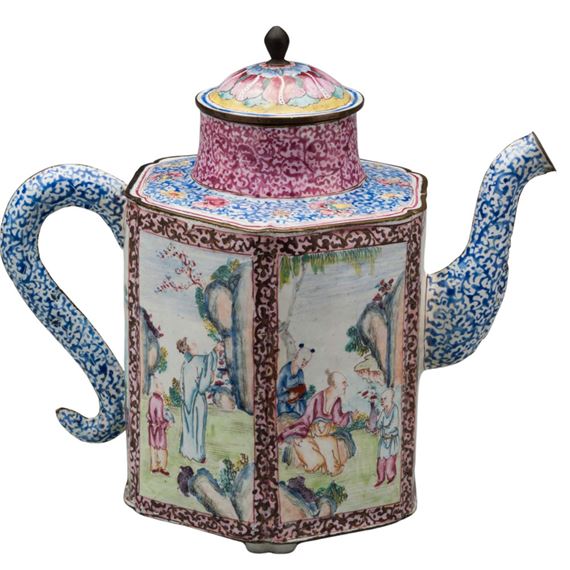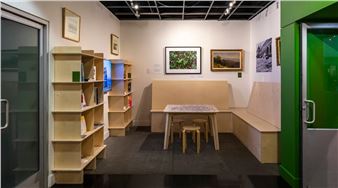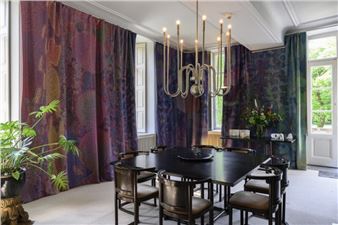Teatime: Chinese Enamels from the Taft Collection
“There is something in the nature of tea that leads us into a world of quiet contemplation of life.”—Lin Yutang, The Importance of Living (1937)
Where do you find comfort? Like the Chinese philosopher Lin Yutang, it might be in a cup of tea. Once used to store, serve, and drink this beloved beverage, the twenty-four 18th-century Chinese painted enamels in Teatime have been selected from a larger grouping—one of the largest known public collections in the world—donated by Compton Allyn in 2014. Although made in China, the works of art in the exhibition were probably intended for Western buyers, as the passion for tea spread from China to Europe and America in the 1700s.
Dutch merchants first began importing tea into Europe in the early 1600s. Not long after, in 1662, King Charles II of England married the Portuguese noblewoman Catherine of Braganza, and she brought her love of tea to the English court. The beverage quickly became popular with the aristocracy, and eventually the craze for tea permeated Western society. Of course, Westerners not only wanted tea leaves from China, they wanted teapots, cups, saucers, and accessories. Today, the skillfully created works of art in Teatime help tell the story of tea’s roots in China and how it became all the rage in 18th-century Europe and America.

Recommended for you
“There is something in the nature of tea that leads us into a world of quiet contemplation of life.”—Lin Yutang, The Importance of Living (1937)
Where do you find comfort? Like the Chinese philosopher Lin Yutang, it might be in a cup of tea. Once used to store, serve, and drink this beloved beverage, the twenty-four 18th-century Chinese painted enamels in Teatime have been selected from a larger grouping—one of the largest known public collections in the world—donated by Compton Allyn in 2014. Although made in China, the works of art in the exhibition were probably intended for Western buyers, as the passion for tea spread from China to Europe and America in the 1700s.
Dutch merchants first began importing tea into Europe in the early 1600s. Not long after, in 1662, King Charles II of England married the Portuguese noblewoman Catherine of Braganza, and she brought her love of tea to the English court. The beverage quickly became popular with the aristocracy, and eventually the craze for tea permeated Western society. Of course, Westerners not only wanted tea leaves from China, they wanted teapots, cups, saucers, and accessories. Today, the skillfully created works of art in Teatime help tell the story of tea’s roots in China and how it became all the rage in 18th-century Europe and America.

 ARTISTS
ARTISTS













